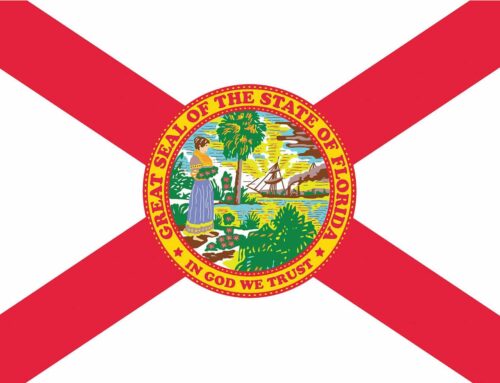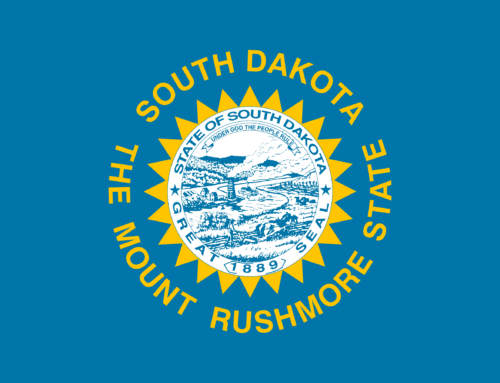It’s that time of year again! Old Man Winter is coming back with a vengeance. Winter is the most hazardous time of year for drivers. So here’s that winter driving safety tips article you were looking for!
Winter Driving Safety Tips
1. Check your insurance.
Your biggest hazards during the winter are collision, blizzard damage, hail damage, and flood damage in some areas when the snow melt comes combined with heavy spring showers. And of course, when roads are icy and it gets dark early and your windows are fogging up in the cold, you’re at extra high risk of both liability and collision.
If you’ve been putting off beefing up your car insurance protection, now’s the time. It’s only December as we write this… There’s still a long winter ahead of us.
If all you have is liability coverage on your car (e.g., your state minimum insurance coverage), you have zero protection against the risk of damaging or totaling your car. And you have zero protection against loss from hail, blizzard, flood, or other environmental damage.
The only thing state minimum, liability only insurance protection covers is damage you might do to other people if you’re involved in an accident. It will pay out to other people. It won’t pay out to you.
So now’s the time to add or bump collision coverage (which pays you if your car is damaged or destroyed in a crash), comprehensive coverage (which pays you if your car is damaged, lost, or destroyed by weather events, floods, fire, theft, floods, etc.)
And you should consider adding liability coverage as well. The state minimum is never enough to fully protect you against the risk of a major injury, or the possibility that you’ll total a high-value car.
Now’s a good time to add uninsured motorist coverage (UM) if you don’t have it already.
And lastly, you should take a look at Personal Injury Protection for yourself and your passengers, if it’s available in your state.
Adding coverage usually means higher premiums. That’s because it’s worth it.
Our recommendation is this: Don’t skimp on protection. If you need to lower your premium, do it by choosing a higher deductible. The reason: A higher deductible only hurts you in the unlikely event you have a claim. But it benefits you all the time in the form of a lower premium!
The other reason is this: It’s not too hard to solve one thousand-dollar problem. You can do this by taking a second job or getting some overtime, or picking up a side hustle.
It’s a lot harder to solve a $10,000 problem, a $50,000 problem, or a $250,000 problem. This is what you could be risking if you carry insufficient liability, collision, comprehension, personal injury protection, and uninsured motorist coverage.
2.) Check your child car seat.
Do you have the best available safety protection for your child? Is it still the right size? There’ve been a lot of advances in child car seats in recent years. They’re still not that easy to install, though.
3.) Assemble your roadside emergency kit.
You should have a fully-stocked first-aid kit, of course, to treat minor injuries, stabilize injured parties, and prevent and treat shock in the event you are involved in or witness an accident.
But a first-aid kit is just a start. Especially in winter, your car emergency kit should also contain:
- Non-perishable food
- Bottled water
- Water-resistant blanket (one for each member of your family, at least)
- Working flashlight
- Spare batteries for the flashlight
- Battery jumpstart kit
- Tow strap or tow rope
- Jumper cables
- Snow brush
- Ice scraper
- Antifreeze/coolant
- Cell phone charger cable (put one in your emergency kit and forget about it. We all know that your regular cable’s going to disappear!)
- Gloves/mittens/knit caps/boots for very cold weather
- Emergency power supply for cell phones – something that will still work if your battery is dead.
- Roadside hazard markers
- “Fix-a-Flat” can
- Tire iron and jack
- Locking lug nut key, if applicable
- Your car’s owner’s manual
- Chem lights.
- Chem light batteries.
- Extra medications
- Extra diapers/baby formula, etc. if you have a small child
Also:
- Bucket of sand or cat litter
- Shovel
- Floor mats
These can help your car get traction and get out of a frozen ditch, etc.
Check the weather before leaving the house. There’s no reason these days to get caught by surprise by bad weather.
4.) Inspect Your Car
- Install winter wipers.
- Check your belts, hoses, spark plugs, wires and cables. This isn’t winter-specific. But if these basic parts malfunction, they could leave you stranded in very bad weather.
- Have a mechanic check your car battery. Batteries get weird in very cold weather. It takes more power to start your car. You want a minimum of 600 CCA for reliable performance. Replace the battery if necessary.
- Add anti-fog treatment to your windshield
- Check your rear-window defroster and make sure it’s working. BEFORE you need it!
- Check your tire treads. Replace worn tires. They won’t get traction on snowy and icy roads.
- Check your spare tire. Does it have air in it?
- Check your coolant. You should have between a 50-50 and 75-25 coolant mix. Check your owner’s manual or have your mechanic tell you what the optimal type of coolant and mix ratio is for your vehicle and the weather conditions expected in your area.
- Make sure your wiper fluid contains anti-freeze.
- Change your oil. You may need a winter-grade motor oil, which is less viscous than summer oils. Your car will run better in sub-freezing weather with winter-grade oil.
- Change your oil filter while you’re at it.
- Check your tire pressure more frequently. Don’t go by the pressure stamped on the side of the tire. Go by the PSI recommended on your owner’s manual. or stamped on the inside of your car door jamb.
5.) Change to winter tires.
Winter tires have deeper treads and are made of a softer rubber compound than standard “all weather” tires. Studies have shown that winter tires provide superior traction, braking, cornering, and acceleration performance in all kinds of wintery conditions compared to all-weather tires. Braking distances with winter tires are up to 30% shorter, according to the Canadian Traffic Injury Research Foundation. And they know a thing or two about driving in winter weather!
The improvements are noticeable in any weather below 44 degrees Fahrenheit.
So it might be worth it to change to a completely different set of tires for the winter.
In some areas, you should consider studded tires. These are illegal in some states.
If it’s my family in the car, I definitely would!
6.) Practice your snow driving.
Every car is different. Before heading out on a long drive in heavy snow and ice conditions, head to a nearby empty parking lot, and practice. See how your car’s automated safety systems and anti-lock brake systems are working in the snow. See how much tire traction you have, and how long it takes to stop at different speeds.
Take your older kids with you when you do it. They’ll learn some valuable lessons, too.
7.) Keep a full gas tank.
It’s not uncommon for people to get stuck on highways for hours while authorities clear up a wreck on an icy road. If you’re caught in one of these incidents (I’m looking at YOU, Atlanta people!), you’ll be glad you had the extra gas in the tank.
If you’ve got an electric car, try to keep your battery at 80% plus.
8.) If you get stranded:
Beware of Carbon monoxide poisoning. Carbon monoxide poisoning is a serious hazard. Make sure your car’s exhaust is not covered in snow. And only run your car exhaust enough to stay warm. Don’t run it for extended periods of time with the windows closed.
Make sure your car is visible. Keep your dome light on, and/or your parking lights. Deploy roadside hazard markers, lights, or chem lights.
Make your emergency obvious, so people can know to stop and help.
Get Your Car Insurance Squared Away Now!
If you got any actionable information out of this, do us a favor and send it to your friends. And give us a call. It’s a good time to take a good look at your car insurance coverage and get some real protection in place.
If you’re already a Select client, call your agent directly! He or she will get you the best possible protection and value for your premium dollars.
If you’re not already a Select Insurance Group client, we want to hear from you, too! Just click here, and fill out our online quote request form. Or call us at (855) 438-7353, and ask to speak with an agent! It’s free! And it could save you from facing a financial disaster if God forbid you’re involved in an accident.
Meanwhile, stay safe out there, and do what it takes to keep your family and others safe as well for the hazardous driving conditions that are coming up.
Thanks for reading, and I’ll see you on the road!
Sincerely,
Steve “Mr. Insurance” Ludwig
CEO, Select Insurance Group






